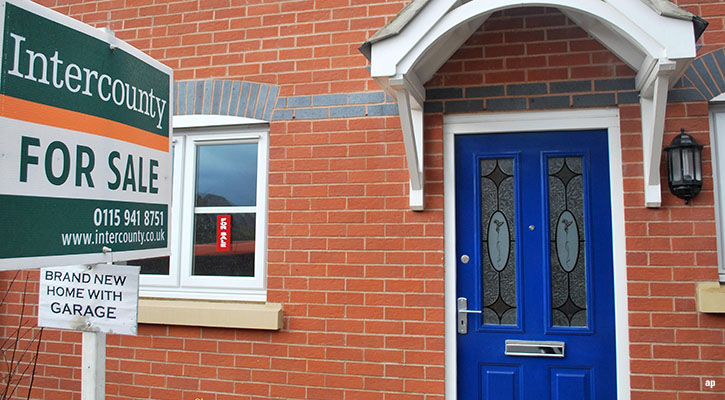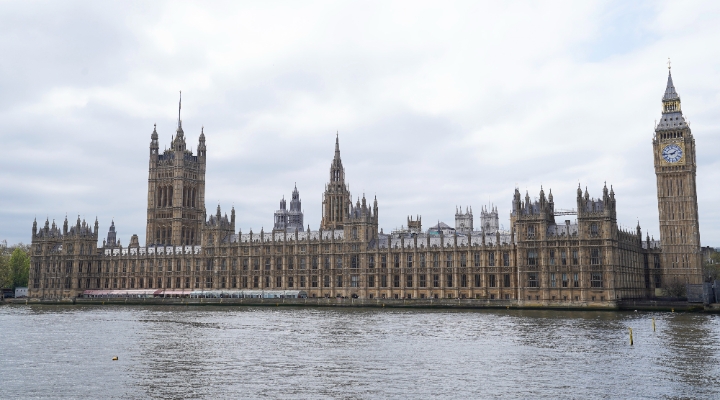
Spiralling mortgage costs have been on the front pages every day this week. Housing minister Michael Gove was asked by the BBC’s Laura Kuenssberg at the weekend whether the government plans to intervene in the market, as it has done with energy bills, and Chancellor Jeremy Hunt is in talks this week with mortgage lenders about easing the pain for homeowners.
This certainly feels like an inflection point for an already fragile housing market, one we’ve written about recently in “A Market Crash? Don’t Bet the House on It”, which takes a contrarian view of the current malaise. Other European housing markets like Sweden are showing their own stresses.
Is this a national crisis and what does it all mean? History could be some guide to what happens next – there were housing slumps in the early 1990s and in 2008-2009. But it feels like we could be in uncharted territory, and to mix metaphors further, is the mortgage timebomb about to go off? Let’s look at some key issues.
Where Are We Now?
Homeowners are facing staggering increases in monthly mortgage payments.
Links between the UK government bond market and mortgage rates are most closely noticeable in terms of popular fixed-rate products. In a week when UK two-year gilts broke through 5%, two-year fixed rate mortgages are now at above 6%. Five-year fixed rate mortgages are a touch below this, but homeowners may be nervous about fixing at such a high rate. For comparison, those fixing in late 2021 were able to get rates around 1%.
The situation is hardly better in terms of variable rate mortgages; the Bank of England is about to make its 13th consecutive rate rise on Thursday, taking base rate to 4.75% - it was 0.10% in December 2021.
“Standard variable rates”, which are the default rate banks and building societies apply when your mortgage product expires, are currently around 7%, a rate not seen in the UK for decades. Borrowing £250,000 from Nationwide with a 10% deposit over 25 years has a SVR of 7.9%, a two-year fix is 5.89% and a five-year fix is 5.29%. A first-time buyer with a lower deposit or worse credit rating, or a buy-to-let-landlord, will pay a higher rate.
Why is This a Problem?
The suddenness of these changes have caught many homeowners out. Trying to find thousands of pounds extra a year of mortgage costs at a time when energy and food bills are surging has put serious pressure on households. Mortgage lenders are also pulling deals from the market as government bond yields rise, meaning there are fewer products available. This in turn slows down housing transactions as financing becomes harder to obtain.
With house prices rising in recent years, the amount people have had to borrow has increased – and cheap money has facilitated this complacency over the large sums involved. Property is a geared asset – when prices are rising, this debt financing model works; when things go wrong, those with high levels of borrowing (or loan to value in the jargon) start to feel the most pain.
Official mortgage data shows a drop in financing – the FCA/Bank of England data shows that in Q1 2023, the value of new mortgage commitments (i.e. lending agreed) was 40% lower than the year before.
The housing market has been the engine of UK economic growth since the financial crisis. Discretionary income fuels consumer spending, keeps the service industry afloat and people in jobs. There’s a separate argument to be had whether it is a good idea for an economy to be so dependent on property, but that’s one for another day.
In blunt terms, a house price crash – not a foregone conclusion – will crater the UK economy. For investors, it goes without saying that post-Brexit, the UK needs some financial stability.
Will it Get Worse?
Potentially.
Mortgage trends in recent years have favoured longer fixed rate products over the once ubiquitous “two-year fix”; either through pure luck or great timing, those booking in five-year fixes in 2021 managed to lock before the great inflation/interest rate cycle turned so aggressively.
For every dinner party bore who fixed at 1% for 10 years, there’s another homeowner whose deal expires this or next year. But that means the pain may just be delayed, says David Goebel, Associate Director of Investment Strategy at leading UK wealth manager Evelyn Partners.
“Many borrowers are yet to come off favourable loans and face the new mortgage rate music … If BoE estimates that only a third of the rate increases since the end of 2021 have fed through to consumers and businesses are near the mark, then many more households and businesses are in for a rates shock as reality feeds through this year and next.”
So unless the Bank of England starts cutting rates – and that looks unlikely with inflation so persistent – or gilt yields start to drop back, rates are likely to be “higher for longer”. “Lower for longer” was the central bank mantra of the low/0% interest rate era, you may remember – and that was the time to go for a long-term fix.
The independent Institute for Fiscal Studies says that fixed-rate mortgage owners are shielded for now, but that a quarter of mortgages will be up for renewal from the last quarter of 2023 to Q3 2024. It estimates that homeowners in their 20s and 30s will suffer the biggest hit to their disposal income with further rate hikes.
Are Defaults Rising – and Will That Lead to Repossessions?
The data isn’t really backing that up at the moment. There’s a recent precedent of forbearance too. The Covid pandemic meant lenders offered people “mortgage holidays” and offered “help through this difficult time”. Cosy communications aside, it’s good business to give customers some slack before the worst-case scenario: the home repossession. This didn’t even happen during the 2008-2009 credit crunch when the financial system was under enormous stress. Lenders were keen to avoid the stigma of kicking people out in the streets, not least because the then Labour government – which was bailing out the industry – applied pressure to avoid a repeat of the early 1990s when repossessions were last at high levels. Economic turmoil then led to the Conservative party being ousted from power and “New Labour” becoming the dominant political force.
Treasury minister Andrew Griffith said this week help that mortgage lenders could provide borrowers in financial trouble, telling MPs: “There is range of measures that include term extensions, a switch to interest-only payment holidays, and the Financial Conduct Authority guidance is very clear that any repossessions – and they are currently running at a historic low – any repossessions should be an absolute last resort.”
I’m Renting, Why Should I Care?
“Won’t someone think of the homeowners?” was a semi-serious joke bandied about in the Morningstar.co.uk office last week. I’ll tackle the moral hazard argument later, but for landlords the most obvious solution to higher rates – apart from selling up – is to pass these costs on to the tenant. If BTL landlords all sell up at once, a smaller supply of properties will inevitably mean they are more expensive. Landlords are less likely to offer lets of more than a year if they’re thinking of selling; and your tenancy may end abruptly if the flat is sold. And there’s the hassle of having prospective buyers marching through when you’re trying to do Zoom calls, a hazard that was easier to navigate in the office era.
Is This Political?
It sure is. The current government has been in power since 2010, which has coincided with ultra low interest rates and a booming housing market. The period has also seen various state initiatives such as Help to Buy, stamp duty holidays, to keep the party going. As the Conservative party approaches a General Election next year (and likely defeat anyway), a housing crisis is the last thing it needs.
Will the Government Intervene?
A “handout to homeowners” is likely to be a highly divisive, unpopular move in an increasingly divided society – those “on the ladder” are perceived to be wealthier than those unable to get on the first rung. Why should taxpayers bail out the property classes?
Support for low-income households during the energy crisis was effectively “helicopter money” – the state giving people cash to spend how they wish (hopefully on food and energy bills). Energy bill discounts were a non means-tested payment worth £67 a month for a few months too. A similar arrangement seems unlikely for homeowners, however welcome it would be to those struggling. There are various tax tweaks that could be tried such as “mortgage interest relief at source”; the average mortgage payment is a mixture of capital repayment (chipping away at the loan), and interest, which is what you pay to the bank for letting you borrow the money in the first place.
“So later this week I'll be meeting the principal mortgage lenders to ask what help they can give to people struggling to pay the more expensive mortgages and what flexibilities might be possible for families in arrears,” Hunt said.
What’s the Monetary/Fiscal Response?
The Sunak government would love the Bank of England to ease off on rate rises; for various reasons, the Bank can’t be seen to be doing this – its remit is to tackle inflation and not save the housing market from falling over. If the Bank were still under the Treasury’s control, its actions now would be different. But inflation is still out of control, and if rates rise again tomorrow, the Bank will be accused of crashing the economy anyway. So independence is not exactly helping its public image at this point – confidence in the instiution, which dates back to the late 17th century, is at a historic low.
The Bank of England’s independence was briefly challenged in the Kwarteng/Truss era. That was just one aspect of their plans that made investors nervous. On becoming chancellor, Jeremy Hunt was quick to insist that relations were now cordial.
“The Bank of England, which has done an outstanding job since its independence, now has my wholehearted support in its mission to defeat inflation and I today confirm we will not change its remit,” he said in autumn 2022.
What’s the Contrarian View?
Sticking with the BoE, which has its finger on the pulse of the UK economy through data gathering and surveys. To read its last monetary policy report in May, you’d be forgiven for thinking that all was well. Economic growth was upgraded, the jobs market was in decent health and the housing market looked to be improving: “Viewings started to pick up and more properties were put up for sale. Contacts expected house prices to stabilise after some months of modest declines. Transaction levels were expected to be lower than in 2022, but roughly normal. That was stronger than expected at the start of the year. Demand in the rental market continued to be very strong, which was driving sharp rises in rents, up around 10% on a year earlier.”
Wage growth figures from the ONS show that employees are getting decent pay rises (although not in real terms), and that suggests a degree of bargaining power. Could staff just ask for higher pay to combat rising mortgage costs? High inflation has been used as a negotiating tactic across the public and private sectors – with mixed success.
Will Baby Boomers Save Us?
It’s a cliché, but some people are not suffering at all: the paid-up homeowner makes up around 30% of the market, and roughly 40% have mortgages. So there’s a cohort of comfortable people with 100% equity in their houses who’ve banked multi-decade gains from the housing markets. With final salary pensions thrown into the mix, this group is likely to be much more “resilient” than your average first-time buyer. If you’re renting, they could be your landlord – and they’re more likely to vote for the political status quo than for change. Labour is planning changes to the tax treatment of property, which is accelerating the haste of amateur landlords to get out of the market now.





























